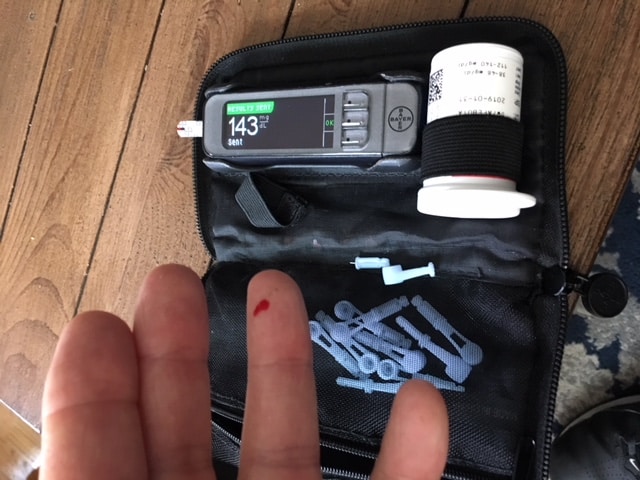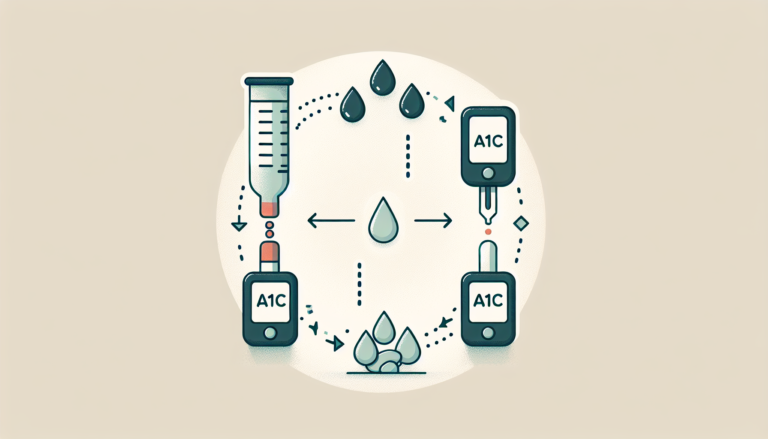A1c Levels Chart for Diabetes Control
Unlock diabetes control! Understand the A1C levels chart and master your blood sugar management with our friendly guide.
That A1C chart’s like a secret weapon for anyone dealing with diabetes. Let’s dive into the nitty-gritty of why A1C levels matter and what numbers diabetics should aim for.
Importance of A1C Levels Chart
A1C levels are like peeking at your report card for blood sugar. Instead of the daily ups and downs, it shows us the big picture, averaging blood glucose levels over two to three months. Way more reliable than just checking once in a while, right?
As per the Cleveland Clinic, folks without diabetes usually have an A1C below 5.7%. Keeping an eye on these levels helps us dodge stuff like heart hiccups, nerve wear, and kidney troubles. It’s like getting a sneak peek into how well we’re handling things.
A1C Goals for Diabetics
Nailing down a specific A1C goal is like setting a clear target for effective diabetes management. Most adults aim for an A1C under 7% (Cleveland Clinic). Hitting this mark slashes the risk of diabetes-related nasties. Check out the table below and this comprehensive A1C Chart!
| A1C Range | What It Means | What To Do |
|---|---|---|
| Below 5.7% | All good | Keep doin’ what you’re doin’ |
| 5.7% – 6.4% | Prediabetes vibes | Time for some lifestyle tweaks |
| Over 6.5% | Diabetes | Stick to that treatment plan |
Thanks to Medical News Today for these insights.
Take for instance those expecting with Type 1 diabetes. They’re shooting for an A1C of 6.5% or under to keep junior safe. This helps prevent bumps like fetal macrosomia.
Our targets might shift based on things like age, overall health, and doctor’s notes. Keeping on track is easier with tools like our A1C calculator guide, brushing up on normal A1C values, and discovering ways to lower A1C naturally.
A1C Calculation
Getting a handle on our A1C levels is like reading the report card of our diabetes management. Here, we’ll break down the cozy relationship between that A1C number and our average blood sugar and what these results mean for us.
A1C and Average Glucose Levels
Think of an A1C test as a snapshot of our blood sugar levels over the past two to three months. The result, shown as a percentage, tells us how much sugar has cozied up to our hemoglobin. Below’s a handy A1C levels chart that ties to Estimated Average Glucose (eAG):
| A1C Level (%) | eAG (mg/dL) | eAG (mmol/L) |
|---|---|---|
| 5.7 (Normal) | 117 | 6.5 |
| 7.0 (Goal for most diabetics) | 154 | 8.6 |
| 9.0 | 212 | 11.8 |
Source: Cleveland Clinic
For those of us managing diabetes, keeping our A1C below 7% is kind of like a preventive health insurance—it helps reduce risks. If you need help flipping the A1C result to average glucose, or back the other way, the A1C calculator is waiting for you.
Interpreting A1C Results
Deciphering A1C results may sound like a Sherlock Holmes task, but it’s pretty down-to-earth:
- Normal: If we score an A1C below 5.7%, hooray! It means an estimated average glucose level below 117 mg/dL.
- Prediabetes: An A1C between 5.7% and 6.4% is a wake-up call that we might step closer toward type 2 diabetes if we’re not careful.
- Diabetes: Hitting 6.5% or above on two separate tests means diabetes has joined the party.
For those of us who’ve been officially branded with diabetes, our doctor might throw out different targets, tailored to our personal health story. Staying under 7% is often the sweet spot, but sometimes we might aim between 7.0%–8.5% (Medical News Today).
Keeping our A1C in check is about turning numbers into a meaningful strategy. Regular testing and knowing what it all means can put us in the driver’s seat of our diabetes journey. For more tidbits, check out the a1c reference range or dig into ways to reduce a1c naturally.
Factors Affecting A1C
Dealing with diabetes means keeping an eye on what messes with our A1C levels. Let’s get into how our age and those pesky hemoglobin variants mix things up with our A1C readings.
Hemoglobin Variants Impact
Those hemoglobin variants can really throw a wrench in the works when it comes to getting accurate A1C results. You’ve got variants like hemoglobin S, C, and E sticking their nose in and causing A1C levels to be higher or lower than they should be. Plus, if you’re dealing with stuff like anemia or sickle cell disease, it can mess with how long red blood cells stick around, meaning the A1C test can get a bit wonky (National Institute of Diabetes and Digestive and Kidney Diseases).
If these variants are part of your life, making sure your healthcare team knows what they’re up against is critical. Labs have their own tricks for measuring A1C when hemoglobin variants are in the mix, so chat with your care crew about your options.
Age and A1C Levels
Aging does more than just add wisdom—it shakes things up with A1C levels, too. The way sugar attaches to hemoglobin can shift as we rack up more years, which might mess with our A1C results. Older folks might have different A1C targets because what’s risky and what’s not can flip-flop as we age.
Talking with our healthcare pros about what A1C number works best for us is key. They’ll look at our whole health picture, any potential complications, and how long we plan to stick around when sorting out our A1C goals. If you want the scoop on A1C goals, our piece on normal a1c values is worth a look.
| Factor | Impact on A1C Levels |
|---|---|
| Hemoglobin Variants | Can lead to misleading results |
| Conditions affecting RBCs | Changes red blood cell lifespan, skewing test |
| Age | Alters glucose bonding process, shifting targets |
Keeping track of our A1C means knowing what throws it off course. By being clued-in and taking action, we can steer towards better diabetes management. If you’re hunting tips on reducing A1C naturally or curious about using an A1C calculator, our other articles have got you covered.
Keeping Tabs on Your A1C
Keeping an eye on your A1C levels is a biggie when it comes to managing diabetes. Knowing when to test and how reliable these tests are makes a huge difference in our quest for that sweet spot – perfect sugar levels. That’s why having this A1C levels chart info is important for diabetics.
How Often Should We Check A1C?
How often you poke at your A1C mostly depends on what you’re trying to achieve and if you’re hitting those sugar level goals or wrestling to stick the landing. As pointed out by those whizzes at the American Diabetes Association, if you’re on track, twice a year should have you covered. But if you’re tweaking treatments or missing targets, you might need more regular check-ins.
Folks past the mid-40s mark – yep, that’s you, Dad – might find their doc suggesting an A1C test just to catch any sneaky diabetes hiding in the wings. This could shake up how often they check later on, depending on if things need more TLC (Medical News Today).
| How Often | What’s Up? |
|---|---|
| Twice a year | Goals met, sugar levels behaving |
| Every 3 months | Changes in meds, or goals missed |
| When the doc calls the shots | Screening for diabetes, certain health issues messing with A1C |
Are A1C Tests on Point?
A1C tests are generally solid but can get thrown off by a few curveballs. For a peek at normal a1c values, check out our handy guide.
What Can Mess With A1C Accuracy?
Normal sugar swings, blood sample handling (you know, if someone has a butterfinger moment), and lab gear differences can yank test results around. That’s why health pros sometimes rerun tests to double-check things.
And heads up, some conditions like anemia or funky hemoglobin can make your test results look a bit wonky, showing A1C levels lower or higher than they really are. This is super important for those with disorders like sickle cell (Cleveland Clinic). Hemoglobin quirks can trip some A1C tests, throwing off reliability.
Want to dig into how these factors might mess with your personal A1C scores? Take a dive into our all-inclusive a1c reference range guide.
To wrap things up, keeping tabs and getting a grip on A1C levels is a bit of a dance. Understanding this A1C levels chart article, along with regular and spot-on testing helps mold diabetes management, keeping sugar levels behaving well. By getting our heads around these quirks, we can snag better control and score some wins for our health. Hunting for more A1C know-how? Swing by our piece on reducing a1c naturally.







